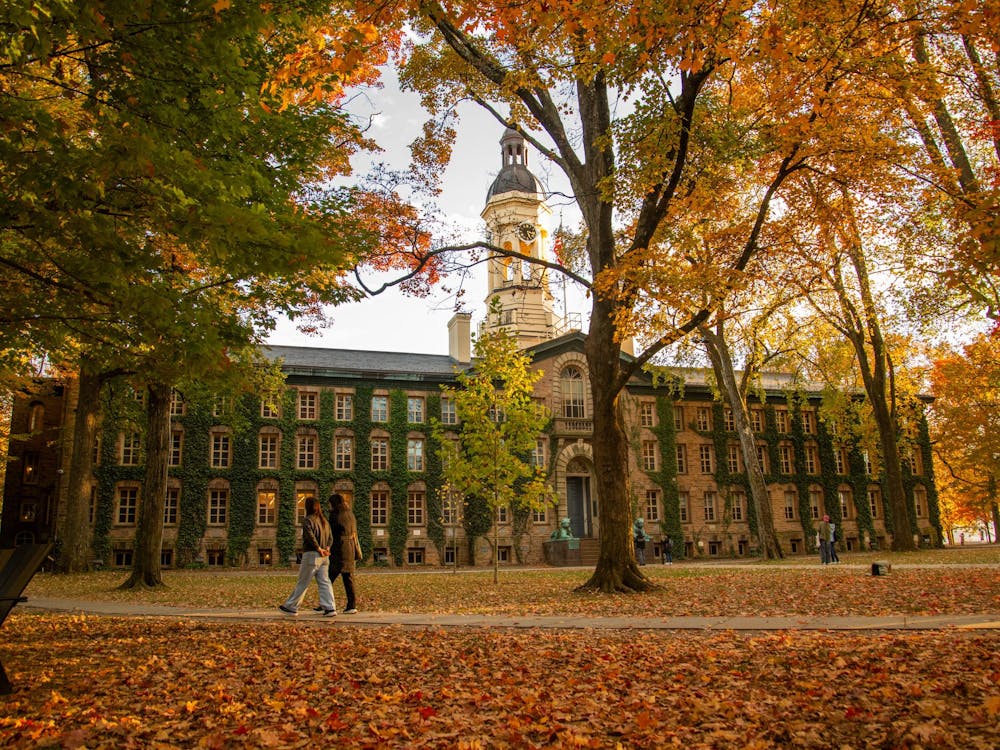Princeton's commitment to sustainability is both longstanding and distinctive. Our success is built on being proactive in developing approaches that are specifically tailored to the buildings, design and energy infrastructure of our campus. For this reason, it's difficult to make the simple comparisons we often see attempted between our environmental initiatives and those of other institutions.
The Leadership in Energy and Environmental Design (LEED) criteria used by some institutions — and often presented as the standard by which Princeton should be judged — were developed by the U.S. Green Buildings Council, which focused initially on an accounting system that was appropriate for standalone buildings, not necessarily for buildings that are part of a larger whole, such as a university campus. The LEED criteria are a major step toward helping building designers, builders and owners understand and make informed decisions about sustainable design. However, our extensive experience with LEED has shown that this narrowly focused set of design criteria could lead to missed opportunities when designing in the context of a campus that already has an efficient infrastructure.
When the LEED criteria were first published, we were determined to take advantage of the system to learn as much as we could and had a number of our staff LEED-certified. That experience led us to understand the benefits and limitations of LEED, and we began writing our design contracts with the requirement that all architectural teams design to a "LEED Certifiable" criteria but within a framework that was more applicable to a campus.
One of the most progressive architectural firms in the country in the field of sustainable design, Kieran Timberlake Associates, worked with our staff to distill the best of the LEED criteria — along with the results of a series of sustainability workshops held at Princeton — to create our Guidelines for Sustainable Design. Princeton now requires designers to apply the guidelines to all designs on campus with the goal of making every architectural design a balance of form, function and efficiency, and all three of these design elements are factors in selecting architects to work on campus.
Princeton has a long history of developing holistic strategies for sustainable evolution, and this multi-pronged approach defies the easy measurement of some renewable energy or "demonstration" projects that have become the shorthand for rating how colleges demonstrate sustainability. Princeton's strategies allow us to create an infrastructure that is highly efficient. Two examples of this are our cogeneration plant and our central system for energy, which provides steam, chilled water and electricity.
The central system approach allows us to have a limited number of boilers and chillers. In the 1980s and early 1990s, the heart of this system was an oiland gas-fired system, but as a result of a cooperative effort with the Center for Energy and Environmental Studies (CEES) at Princeton, the cogeneration plant was built in the 1990s. It operates more efficiently in terms of cost and emissions than the public utility plants that would otherwise provide electricity to the campus. As a result of the plant's installation, Princeton's greenhouse gas emissions dropped significantly, despite an increase in the number of buildings on campus.
Our longstanding commitment to environmental sensitivity has been reinforced by President Tilghman's inclusion of sustainability as one of the five guiding principles that inform and set the course for the current campus planning effort. The designs of all recent projects incorporate creative approaches to making meaningful contributions to sustainable evolution of the campus, from Bloomberg Hall, which was designed to be the equivalent of LEED "silver" certification, to the new chemistry building, for which environmental considerations were part of the core of its design.
Staff, faculty and students who are passionate about sustainable design and growth have been working together on many fronts to make Princeton a leader in sustainability for many years. Rather than focusing on a single issue, sustainability pervades every operational element at Princeton, from dining to recycling, and from design of renovations to design of new buildings. We recognize that we still have significant room for improvement, and we intend to take advantage of those opportunities. Michael McKay is the vice president for Facilities. He may by reached at mckay@princeton.edu.







